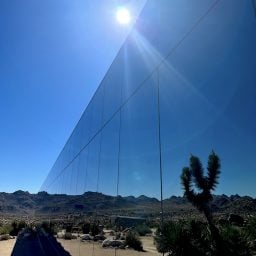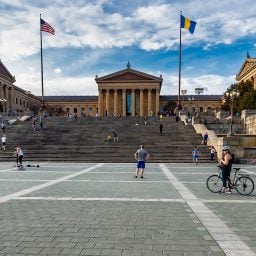For fans of Marcel Duchamp and Rocky Balboa alike, the Philadelphia Museum of Art has long been a pilgrimage site. Last week, the venerable museum gave fans a new reason to visit, opening the first phase of an architectural expansion that has been decades in the making.
The museum is famous at least as much for its temple-like architecture as for any of the works in its collection. Frank Gehry, the starchitect known and parodied for his glamorously rule-bending structures, is not the first person you might have imagined for the job of building on its stately strengths.
But all in all, Gehry’s $233 million expansion is a model of focus. The renovation does not add another flashy landmark to the complex. Most of the work had to do with opening up new spaces and access points, expanding downwards.
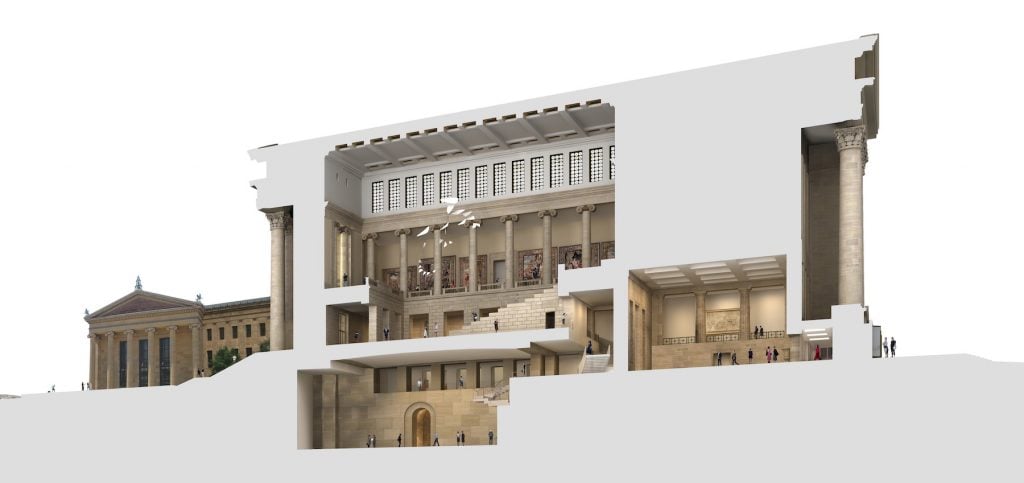
A cross-section shows the changes to the interior within the existing building (Core Project). Architectural rendering by Gehry Partners, LLP and KX-L, 2016. Photo courtesy Philadelphia Museum of Art, 2021.
If you’ve visited before, you will find something that feels very much like the Philadelphia Museum you remember, both outside and in.
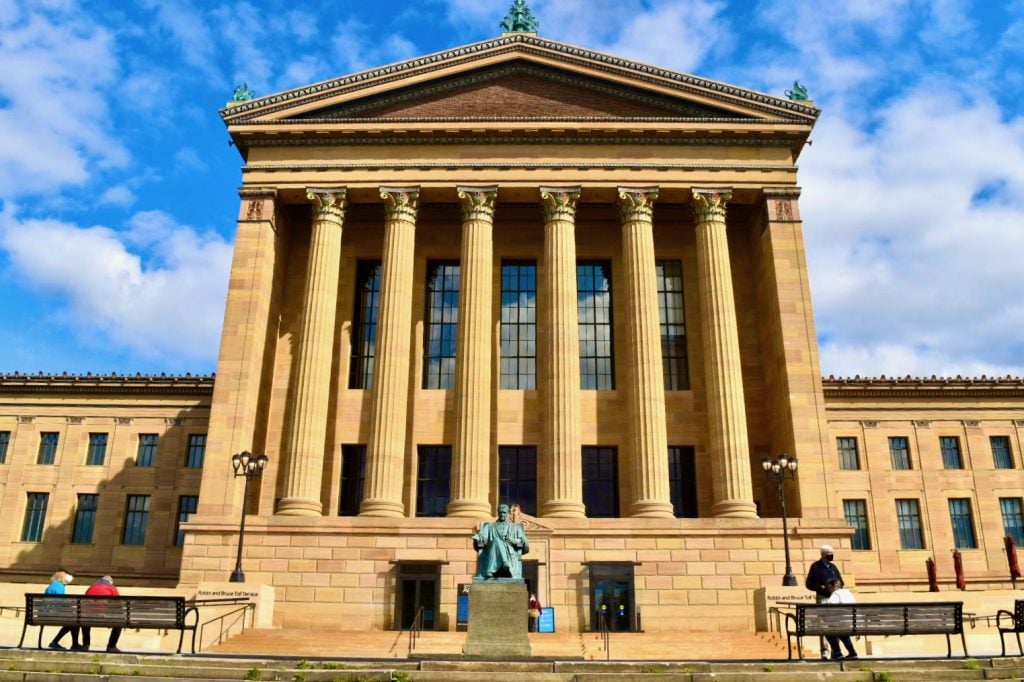
Exterior of the Philadelphia Museum of Art. Photo by Ben Davis.
Telegenic interior spaces like the Great Stair Hall remain untouched.
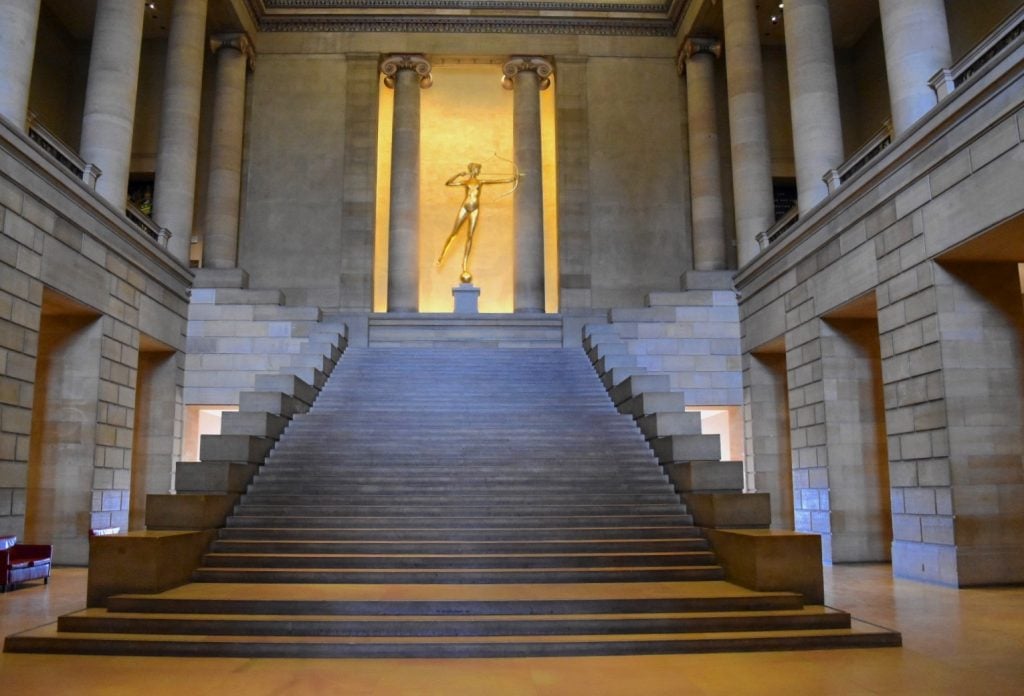
The Great Stair Hall at the Philadelphia Museum of Art. Photo by Ben Davis.
In the upper levels of the museum, you have the familiar attractions such as the period rooms and the European arms and armor galleries.
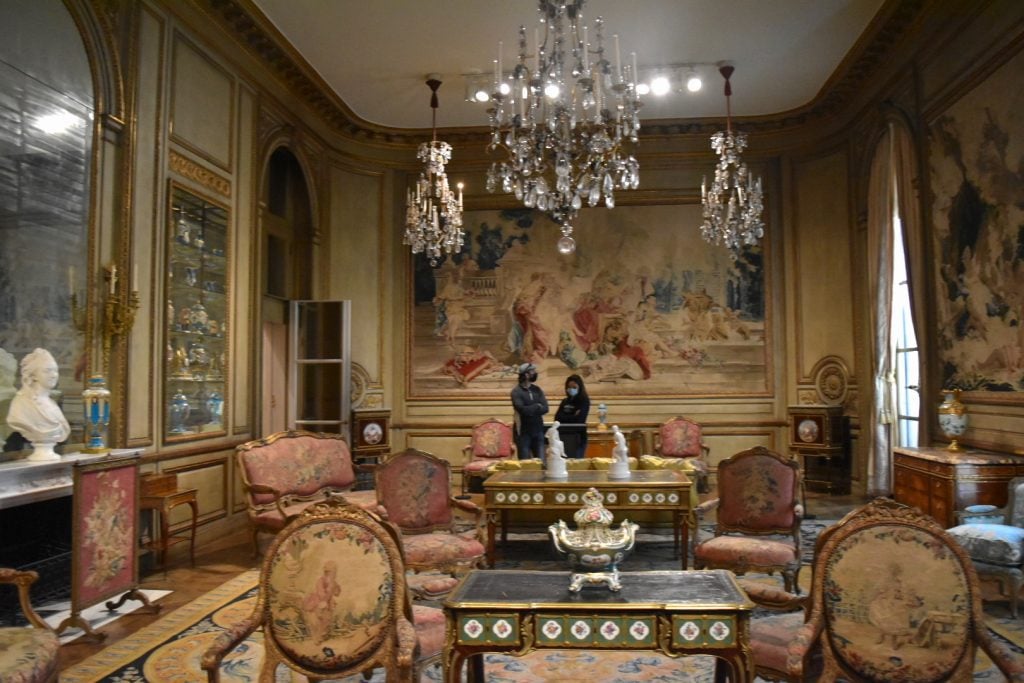
The period rooms at the Philadelphia Museum of Art. Photo by Ben Davis.
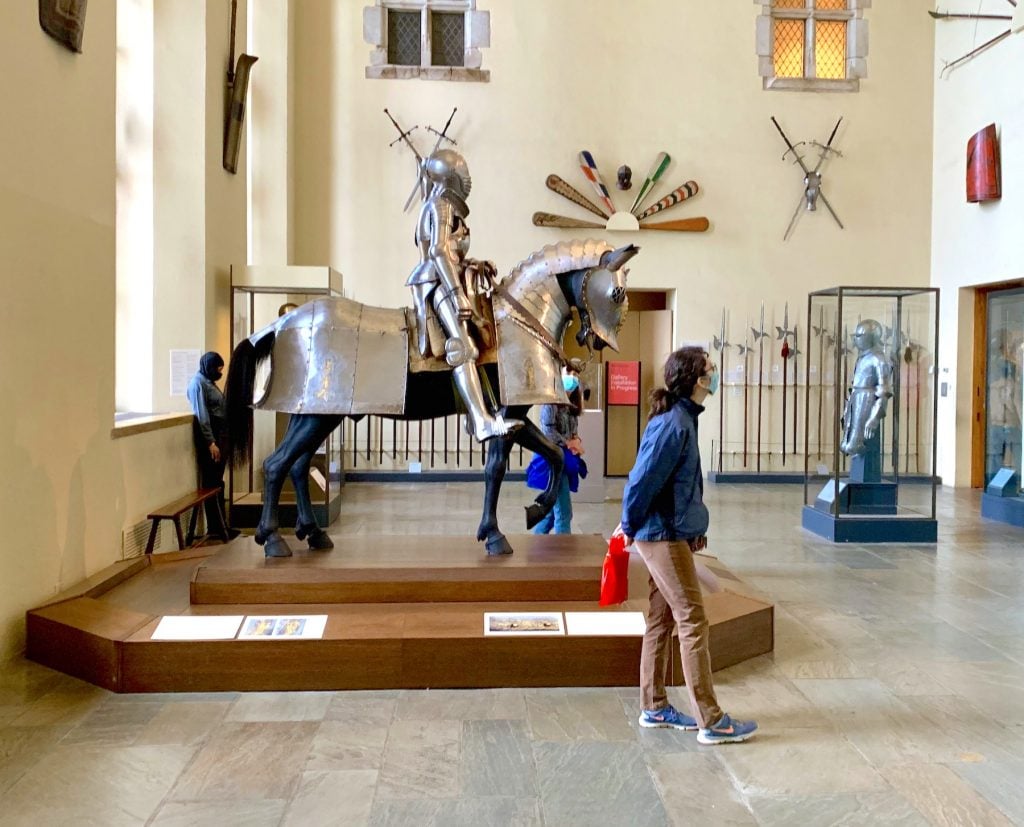
Arms & Armor gallery at the Philadelphia Museum of Art. Photo by Ben Davis.
And, of course, there’s PMA’s unparalleled collection of works by Marcel Duchamp.
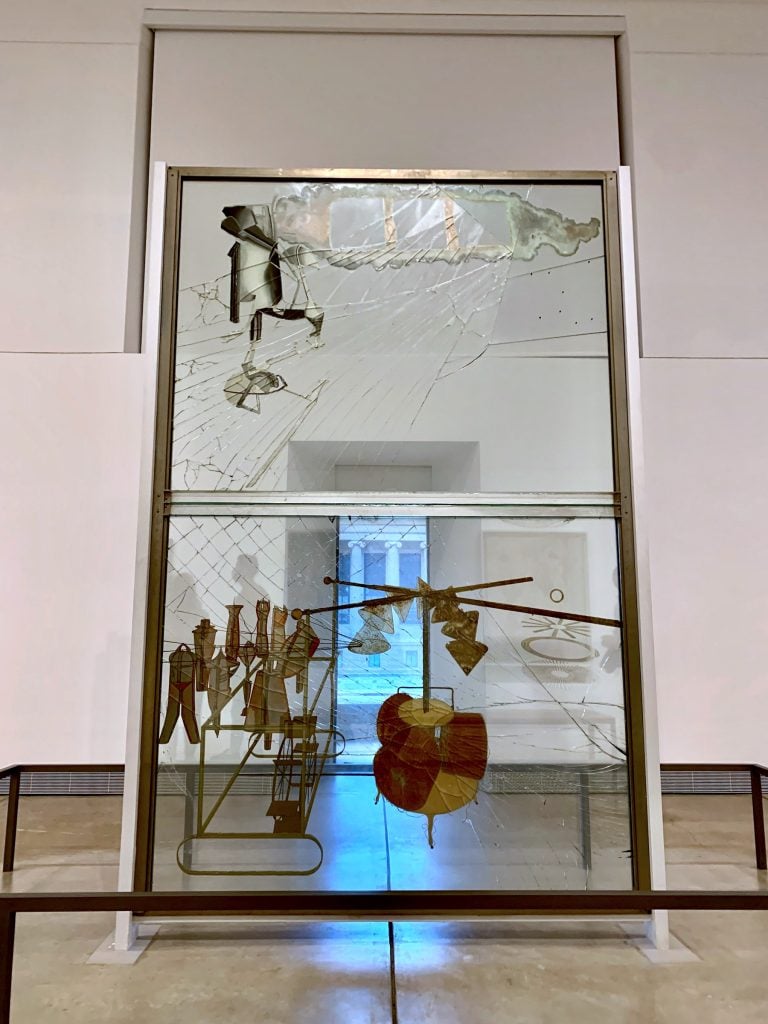
Marcel Duchamp, The Bride Stripped Bare by Her Bachelors, Even (The Large Glass) (1915–23). Photo by Ben Davis.
The expanded museum has also opened with a Senga Nengudi survey, “Topographies,” which is worth the trip all on its own.
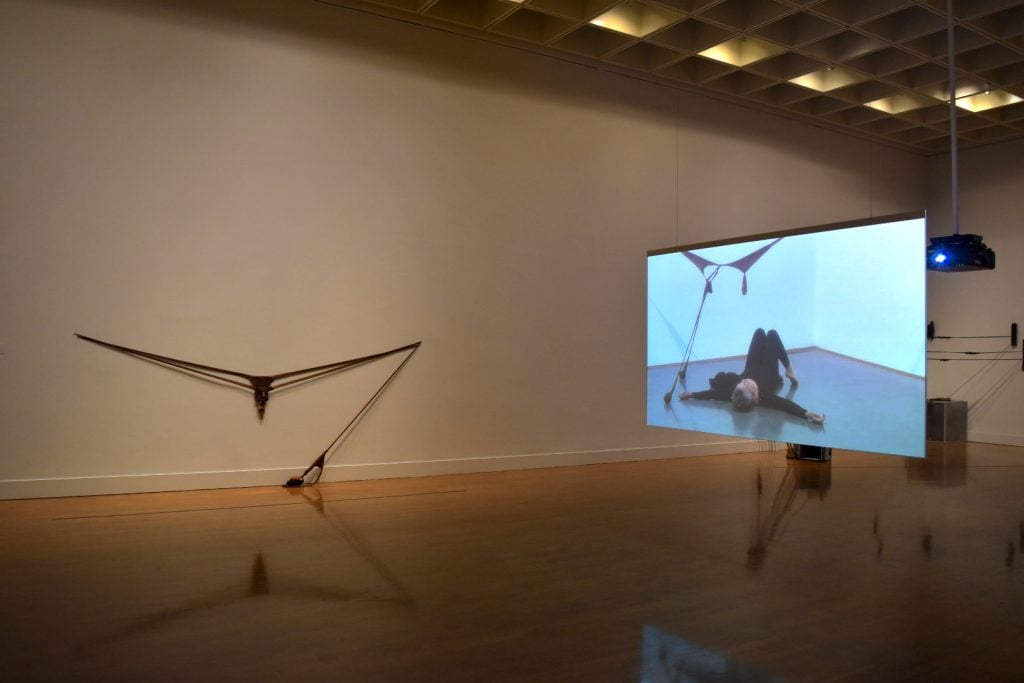
Installation view of “Senga Nengudi: Topogaphies” at the Philadelphia Museum of Art. Photo by Ben Davis.
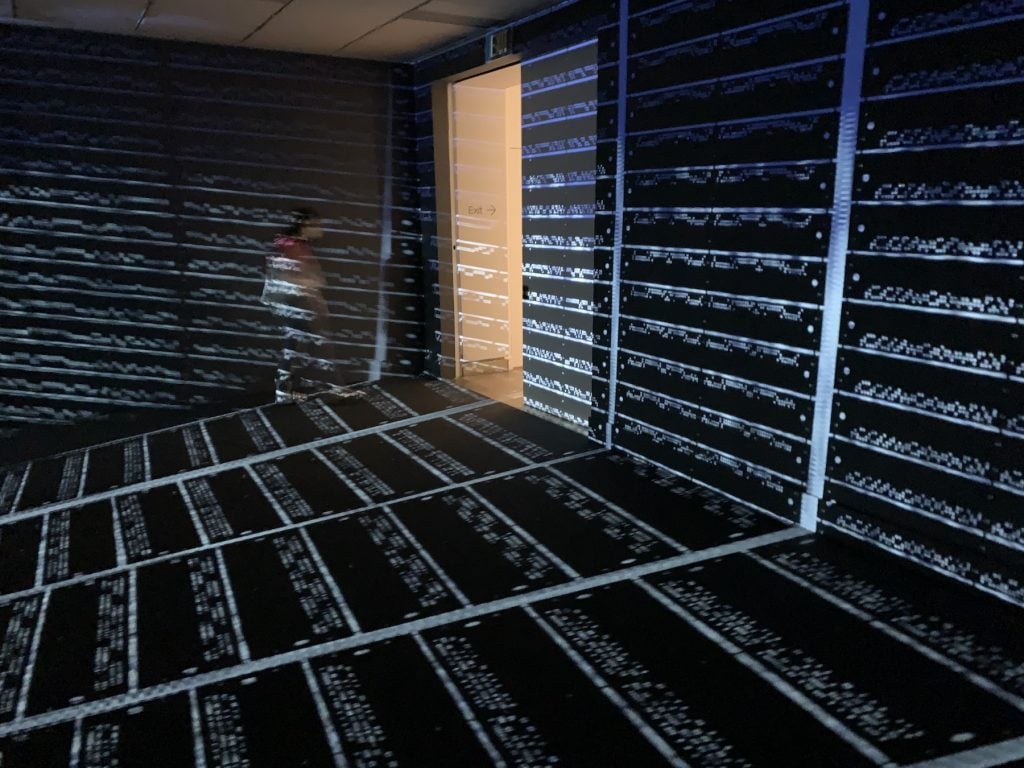
Installation view of Senga Nengudi, Warp Trance (2007). Photo by Ben Davis.
If you’re there for the expansion, you will first notice it in the new access points, which open onto the below-ground “vaulted walkway” that punches through the hill to make north and south entrances.
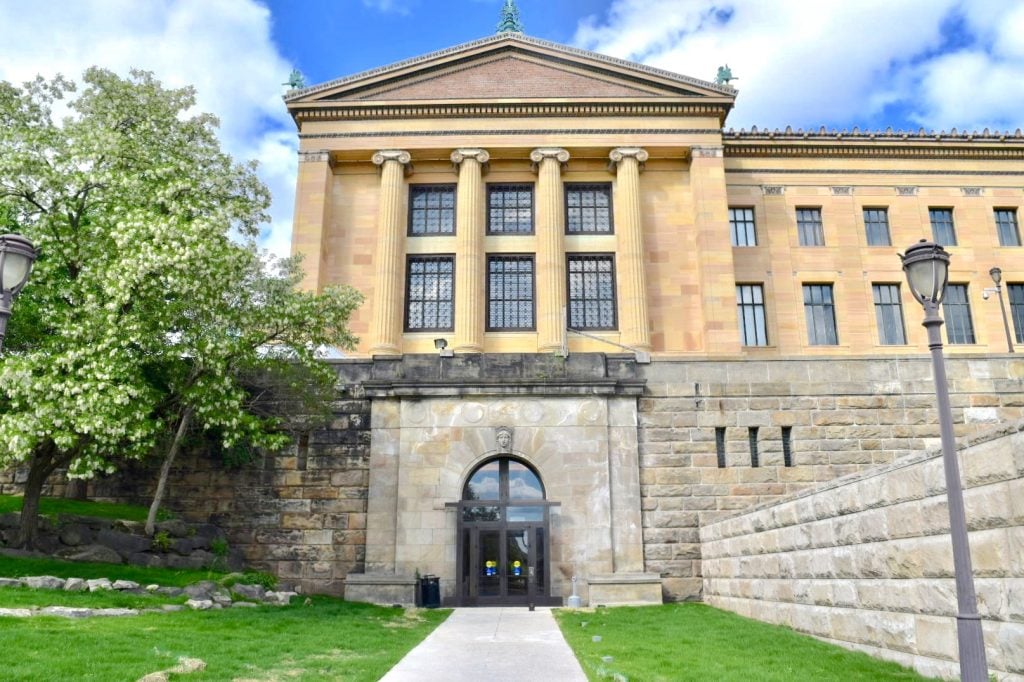
The South Entrance to the Philadelphia Museum of Art. Photo by Ben Davis.
Dotted with just a few large sculptures for punctuation, the walkway has a monastic quality.
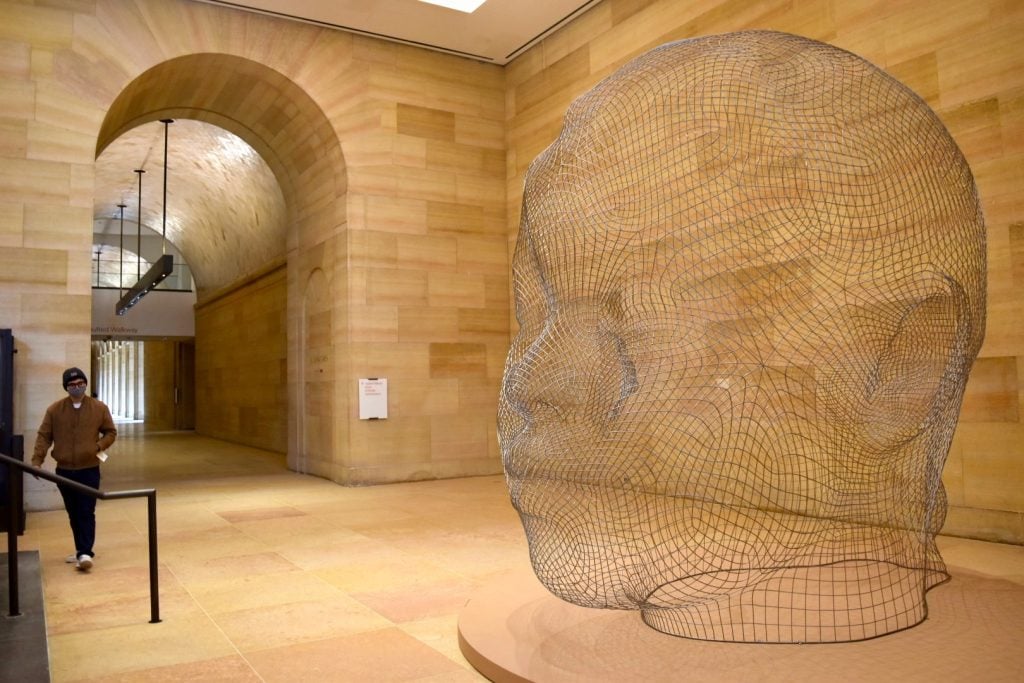
Jaume Plensa, Nuria (2017). Photo by Ben Davis.
To keep the 640-foot-long underground walkway from feeling too cave-like, skylights punch through to the ground level letting in the natural light.
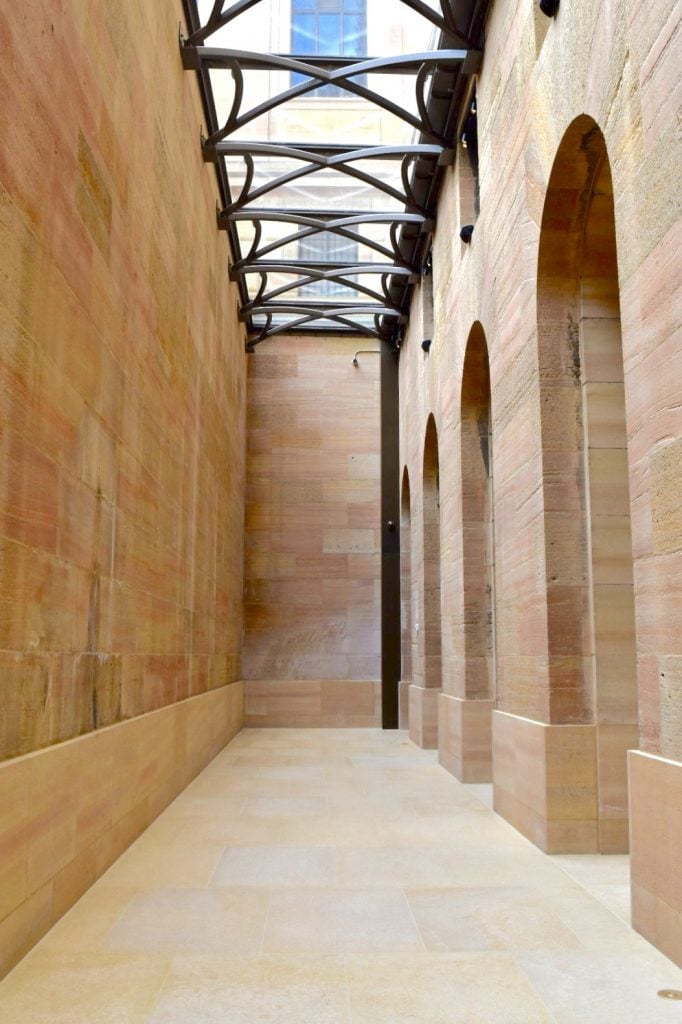
Space underground at the Philadelphia Museum of Art. Photo by Ben Davis.
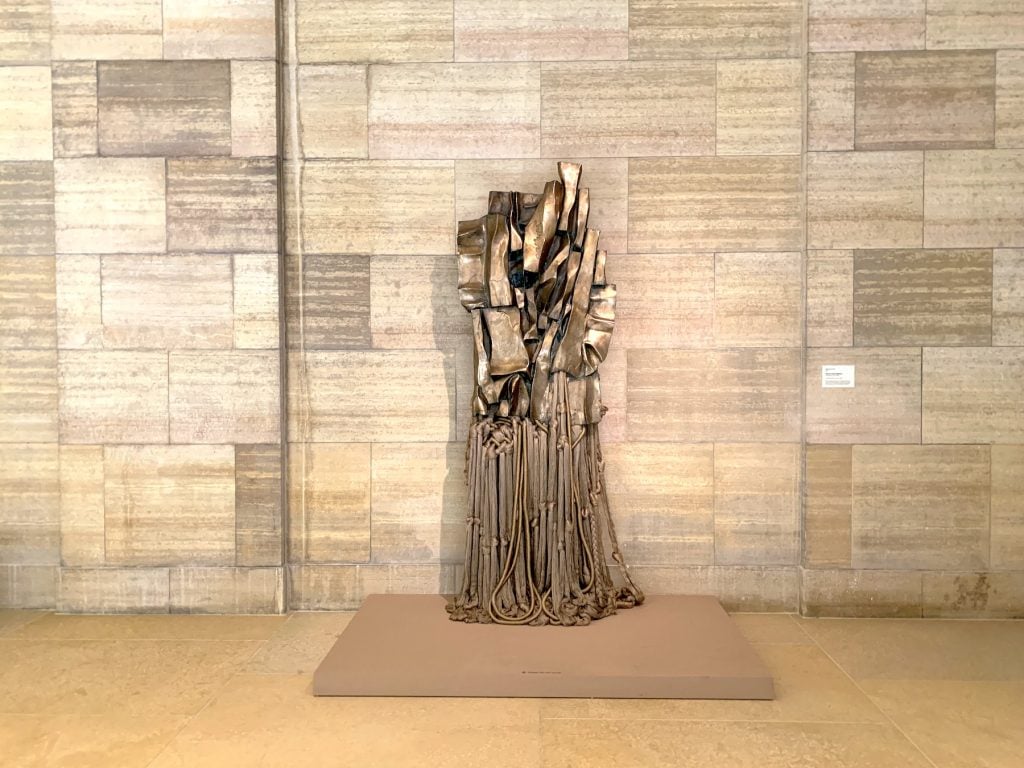
Barbara Chase-Riboud, Malcolm X #3 (1969). Photo by Ben Davis.
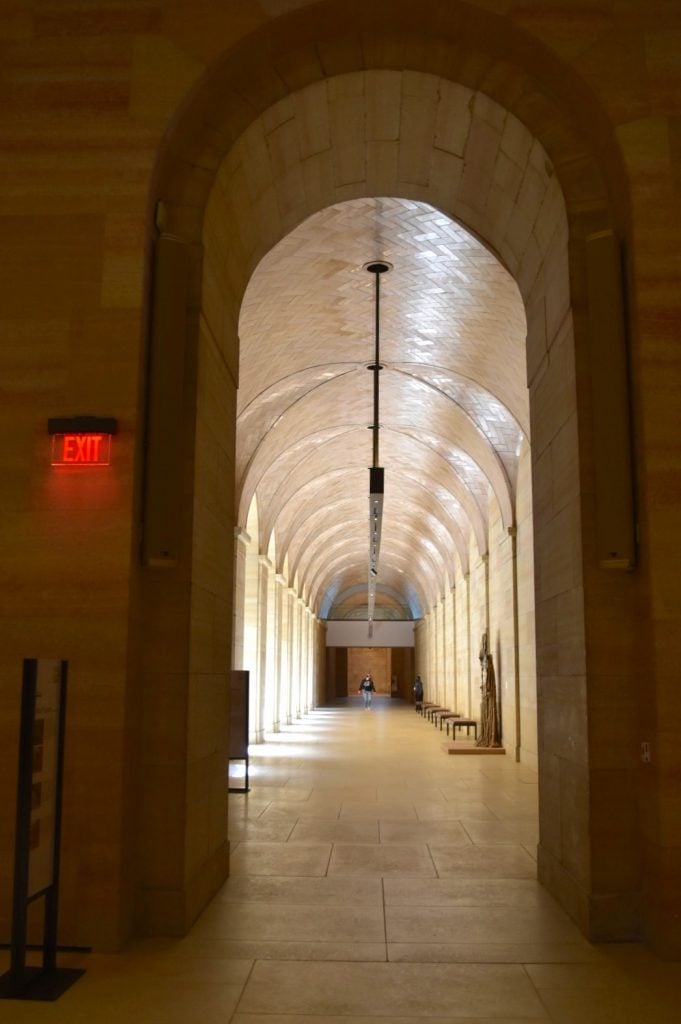
Looking south down the vaulted walkway from the Williams Forum at the Philadelphia Museum of Art. Photo by Ben Davis.
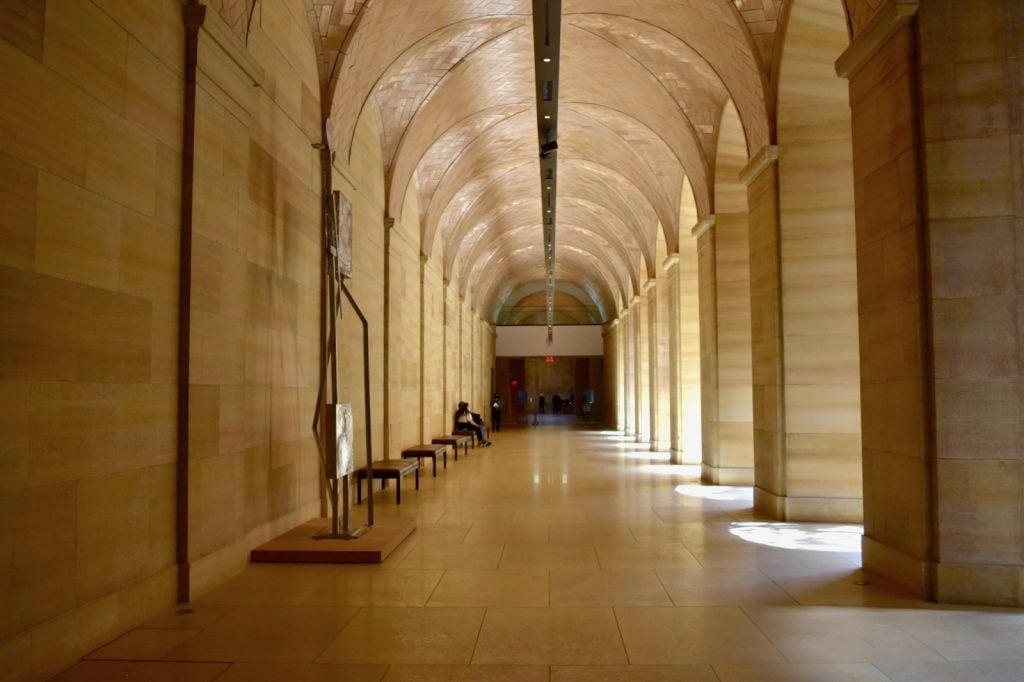
The north vaulted walkway at the Philadelphia Museum of Art. Photo by Ben Davis.
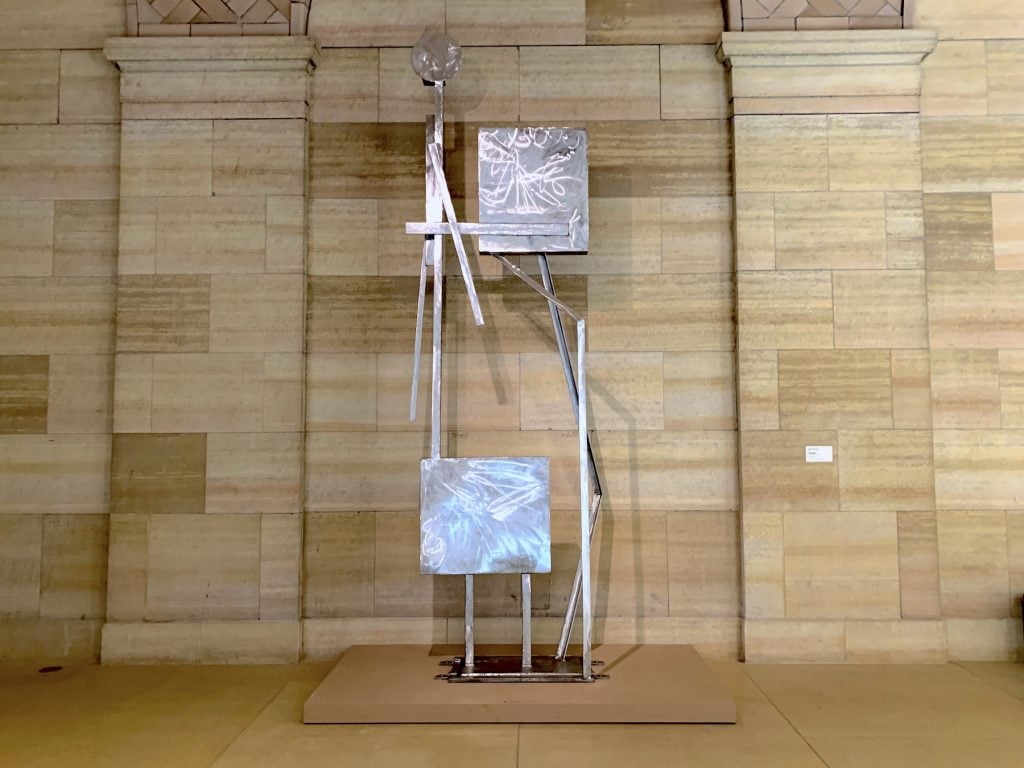
David Smith, Two Box Structure (1961). Photo by Ben Davis.
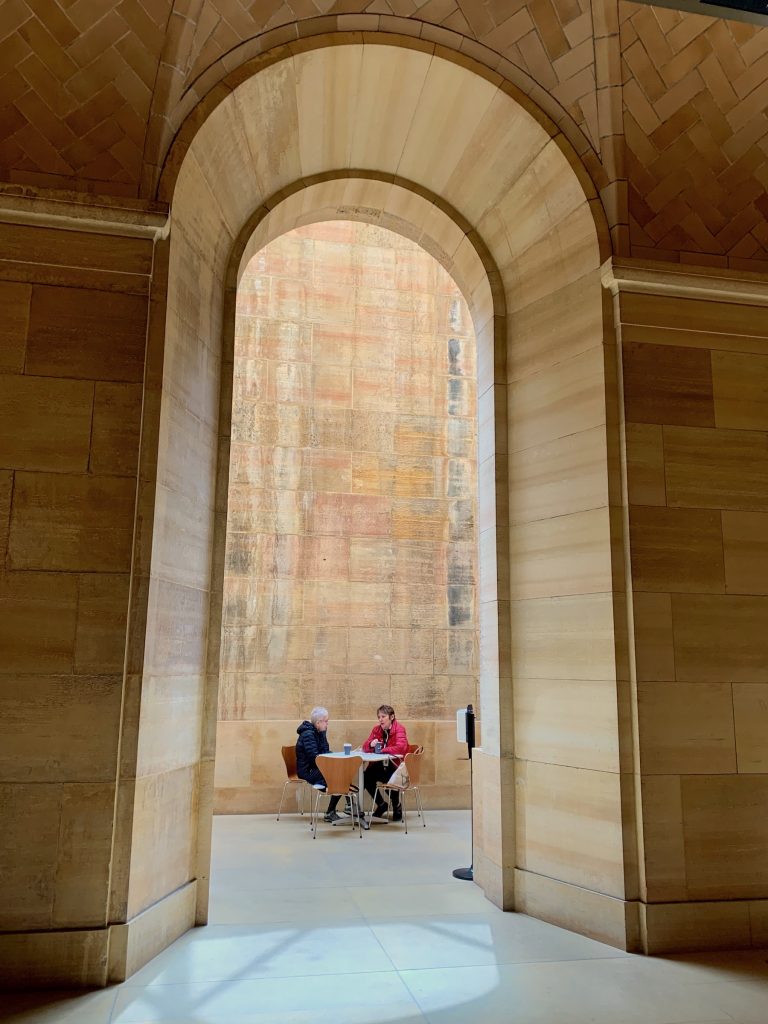
Visitors enjoying the cafe on the new level at the Philadelphia Museum of Art. Photo by Ben Davis.
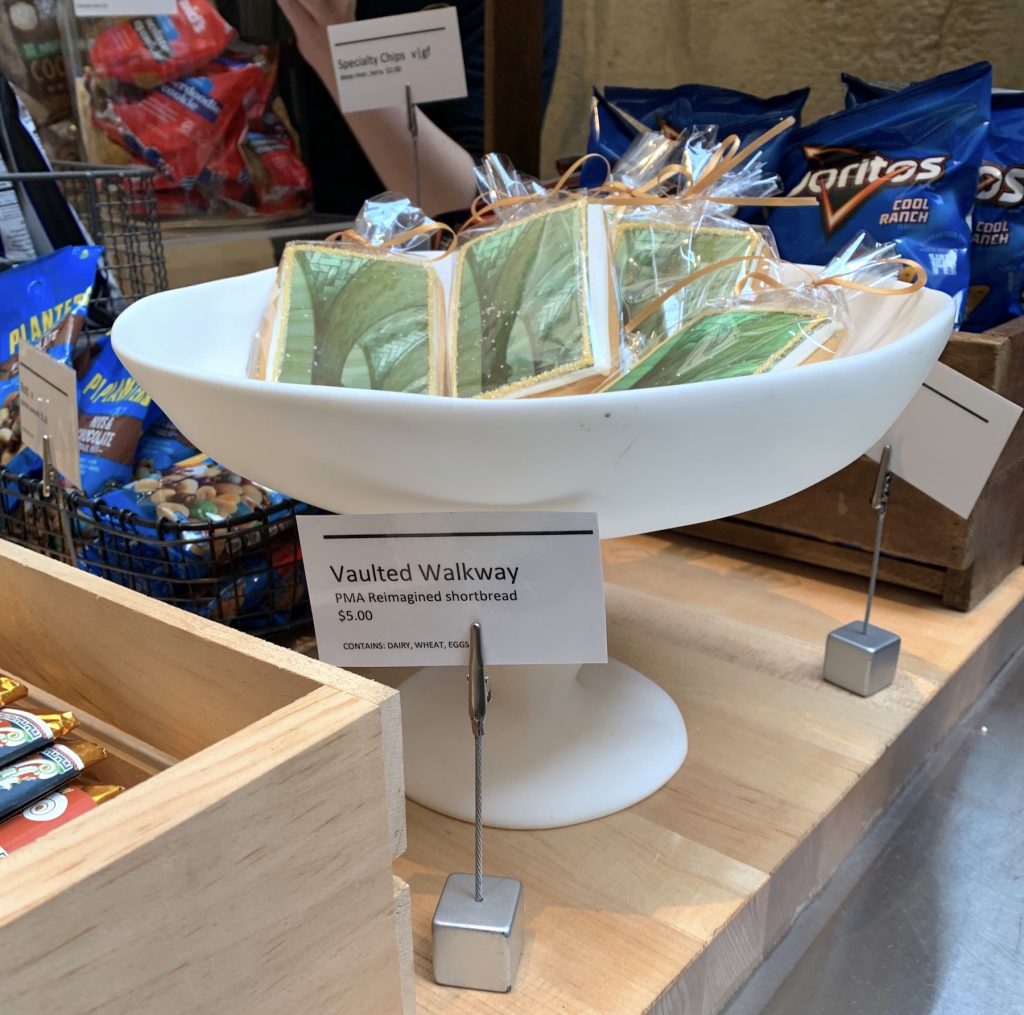
Custom “vaulted walkway” shortbread on sale in the cafe at the Philadelphia Museum of Art. Photo by Ben Davis.
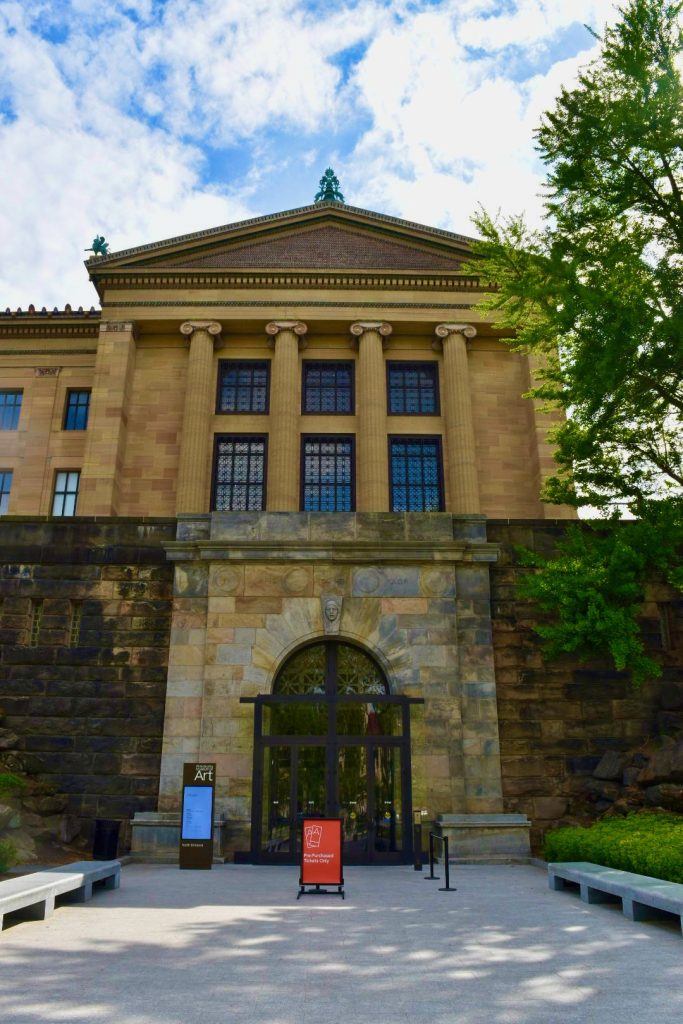
The north entrance of the Philadelphia Museum of Art. Photo by Ben Davis.
Likely the most spectacular new space and signature of the expansion is the Williams Forum, located where the north and south sections of the vaulted walkway meet. The towering space is meant to serve as a venue for performance or sculpture commissions, and opens with Teresita Fernández’s scorched relief image of the United States and its colonies, Fire (United States of the Americas), which makes great use of the vast, looming space.
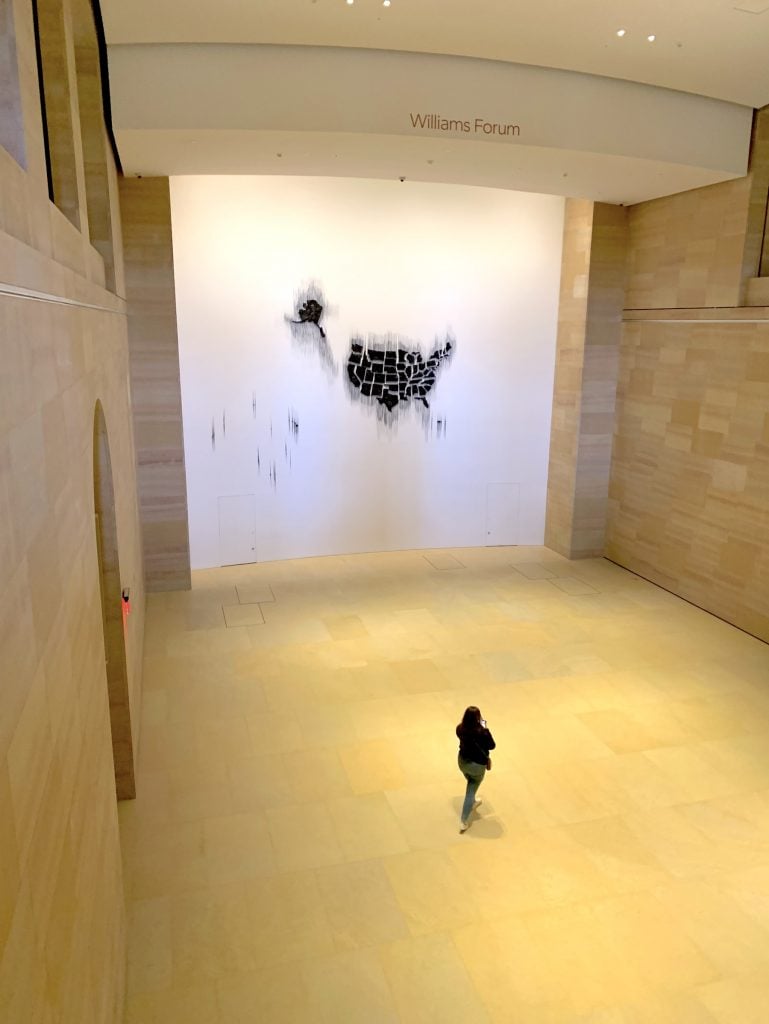
The Williams Forum at the Philadelphia Museum of Art. Photo by Ben Davis.
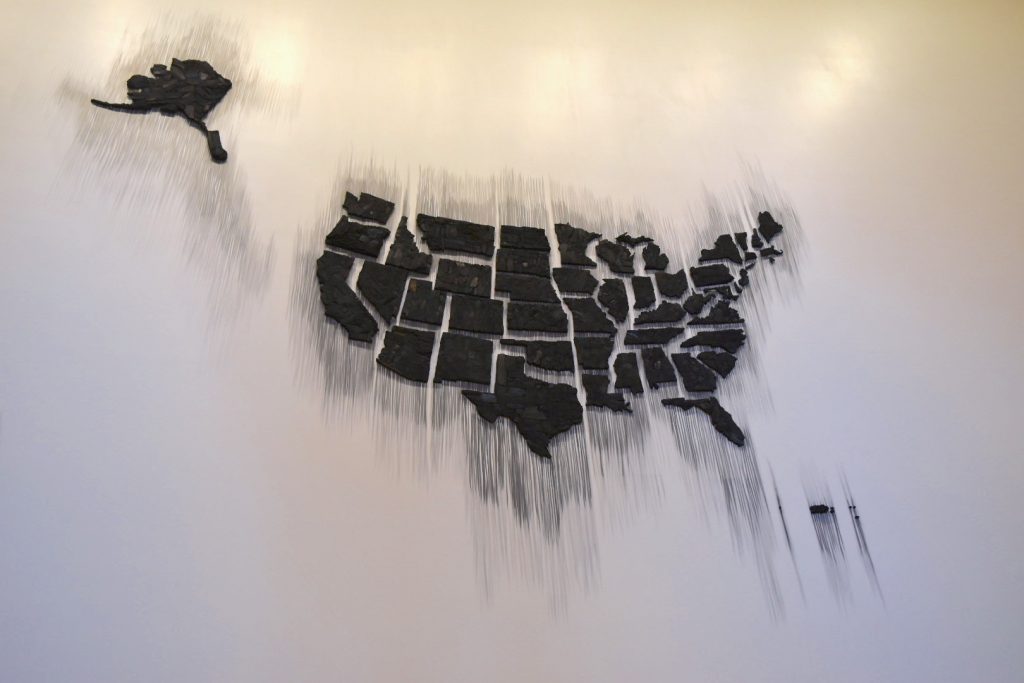
Detail of Teresita Fernández, Fire (United States of the Americas) (2017/2020). Photo by Ben Davis.
A showy stairway is really the closest thing to a big Gehry Moment here. It connects the forum to the west entrance through Lenfest Hall, still the primary portal to the museum, as well as to the newly opened-up first floor exhibition spaces above.
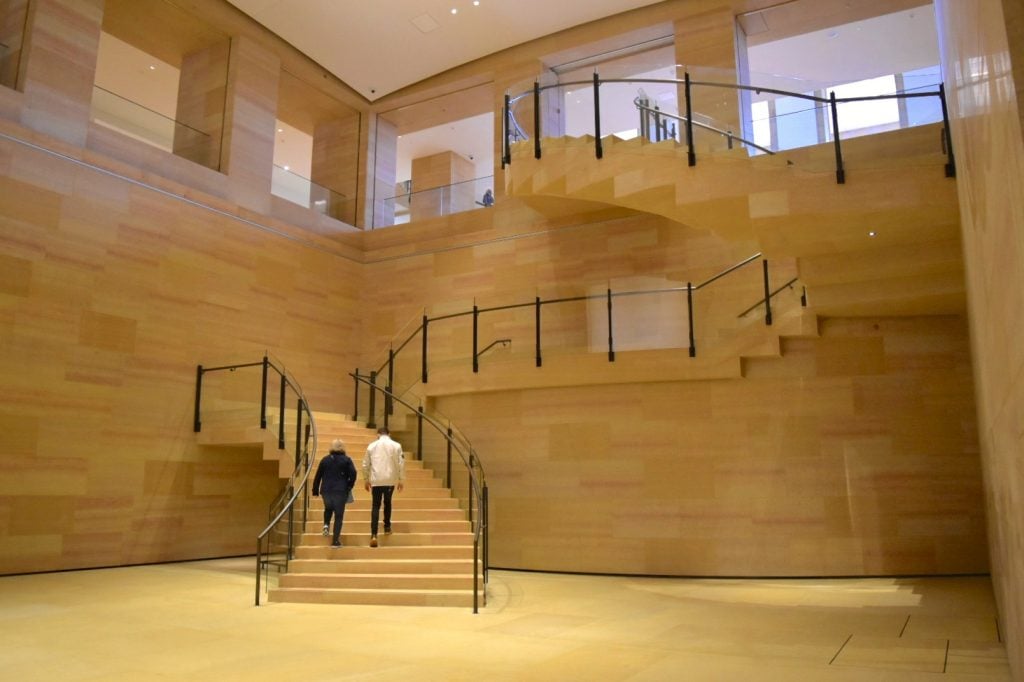
New stairway at the Philadelphia Museum of Art. Photo by Ben Davis.
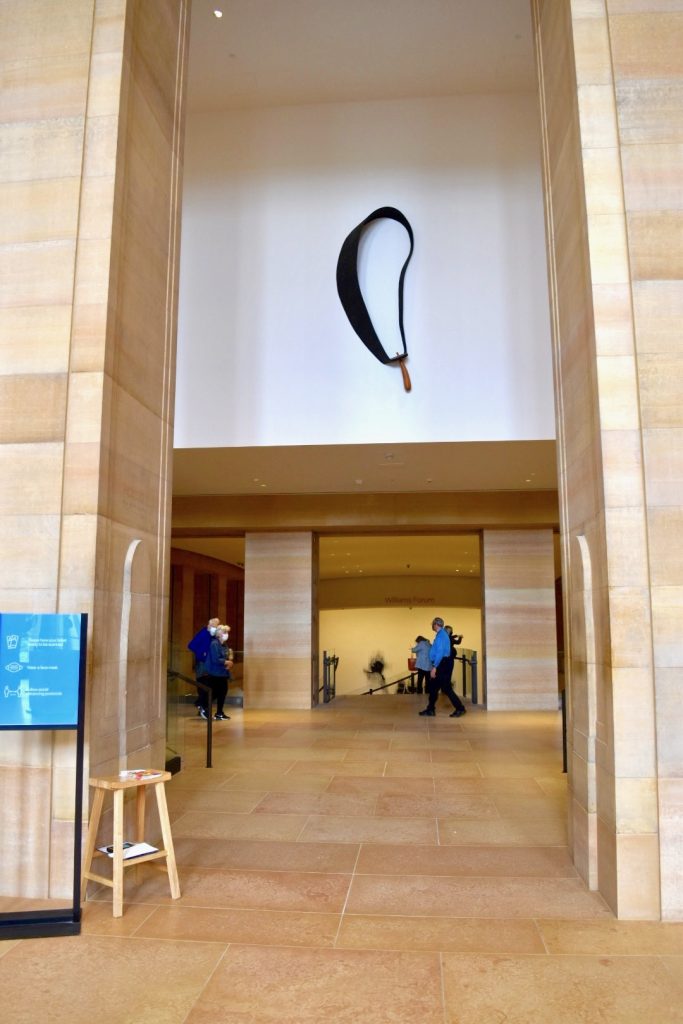
Entrance in Lenfest Hall, featuring Martin Puryear, Generation (1988). Photo by Ben Davis.
Most importantly for fans of the collection, the expansion gives the museum 20,000 square feet of new gallery space to work with on level one. One wing is dedicated to the Philadelphia Museum’s collection of American art, 1650–1850.
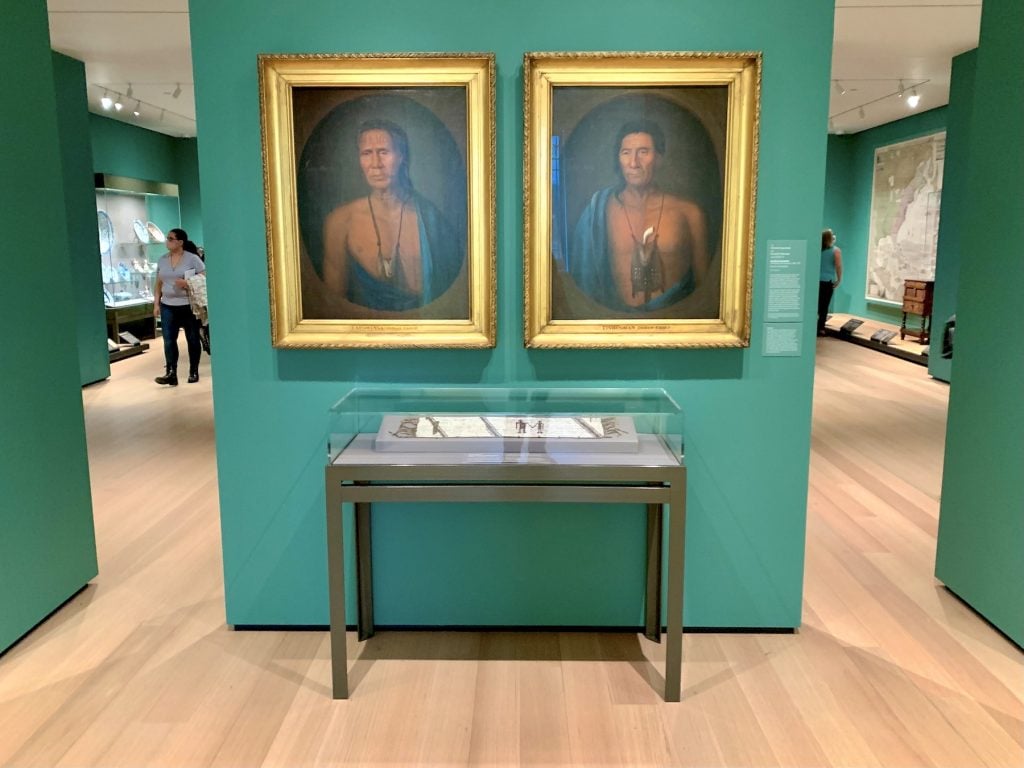
Gustavus Hesselius, Portrait of Lapowinsa and Portrait of Tishcohan (ca. 1735-37), displayed with Wampum Belt (ca. 1682). Photo by Ben Davis.
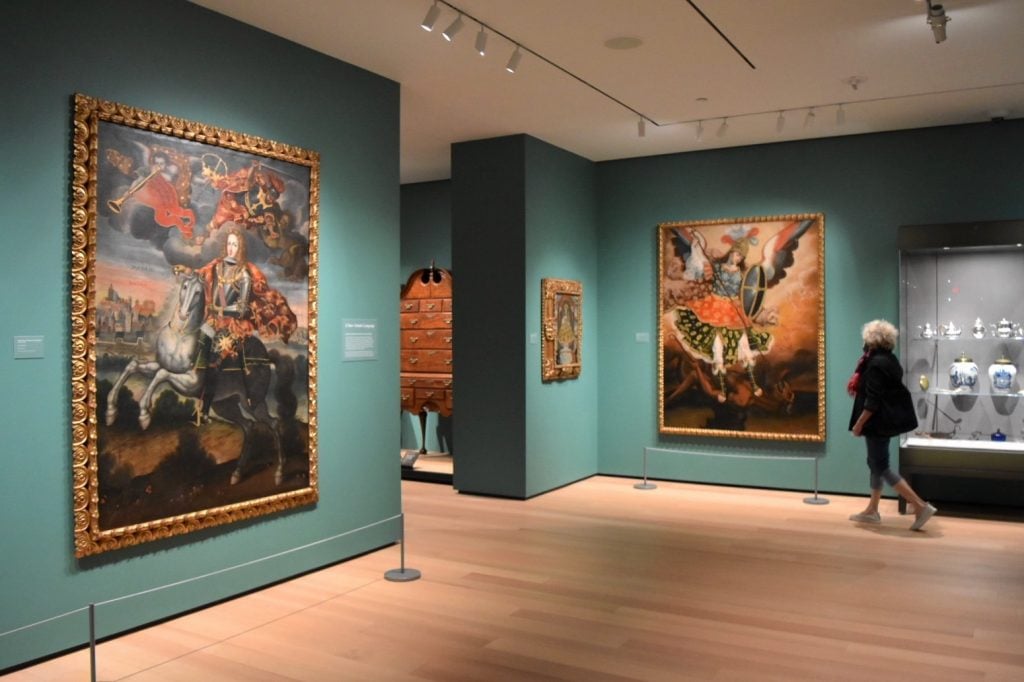
The new American art galleries at the Philadelphia Museum of Art. Photo by Ben Davis.
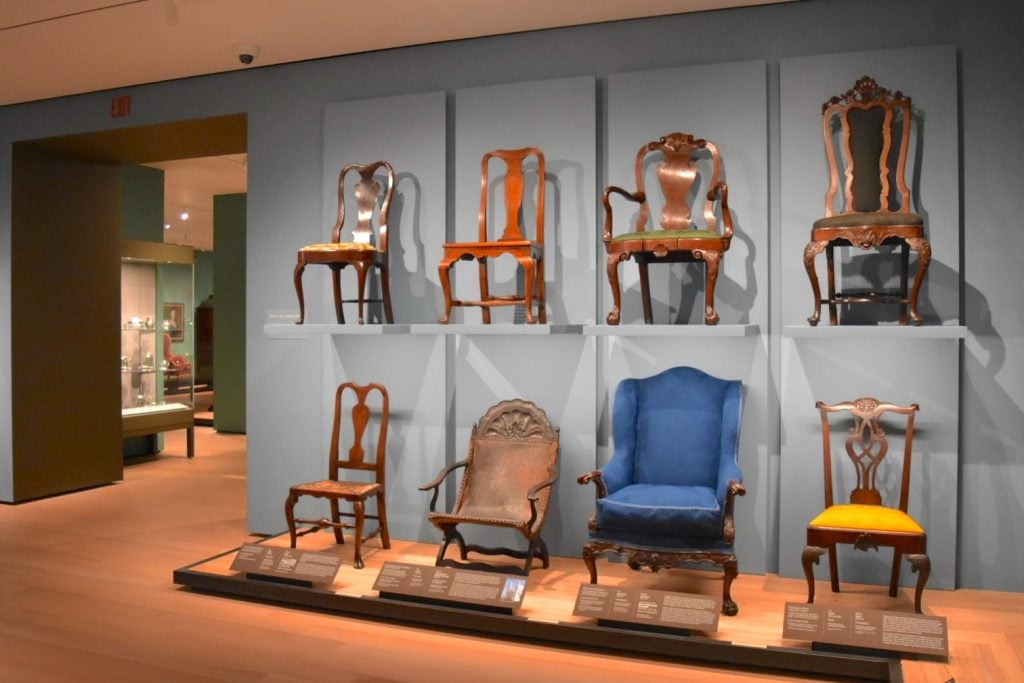
A display of chairs in the new American Art galleries at the Philadelphia Museum of Art. Photo by Ben Davis.
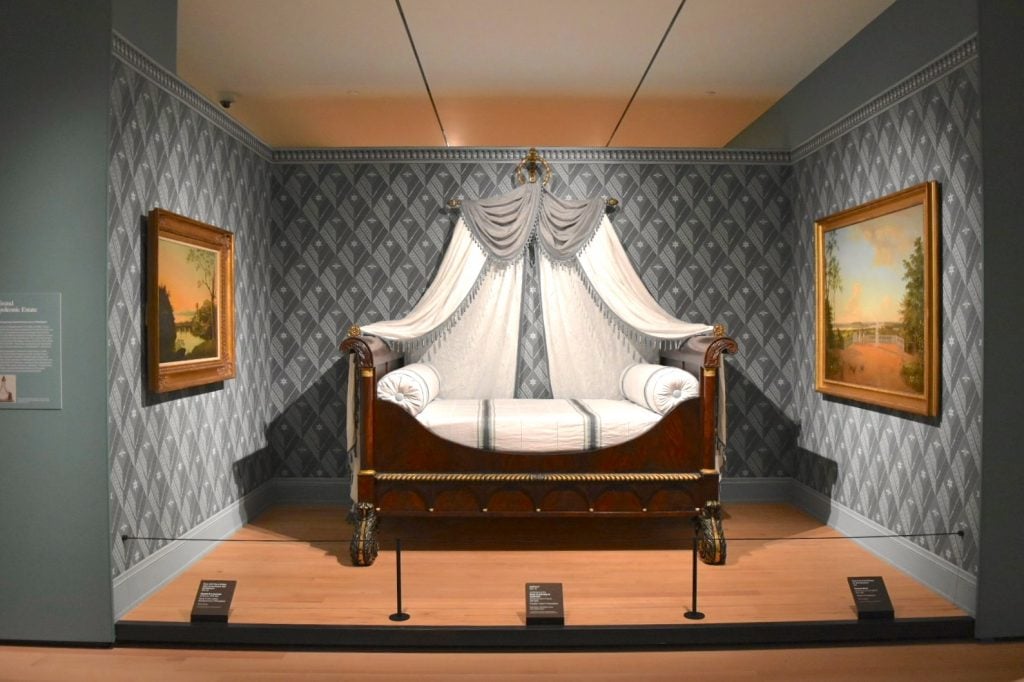
The new American art galleries at the renovated Philadelphia Museum of Art. Photo by Ben Davis.
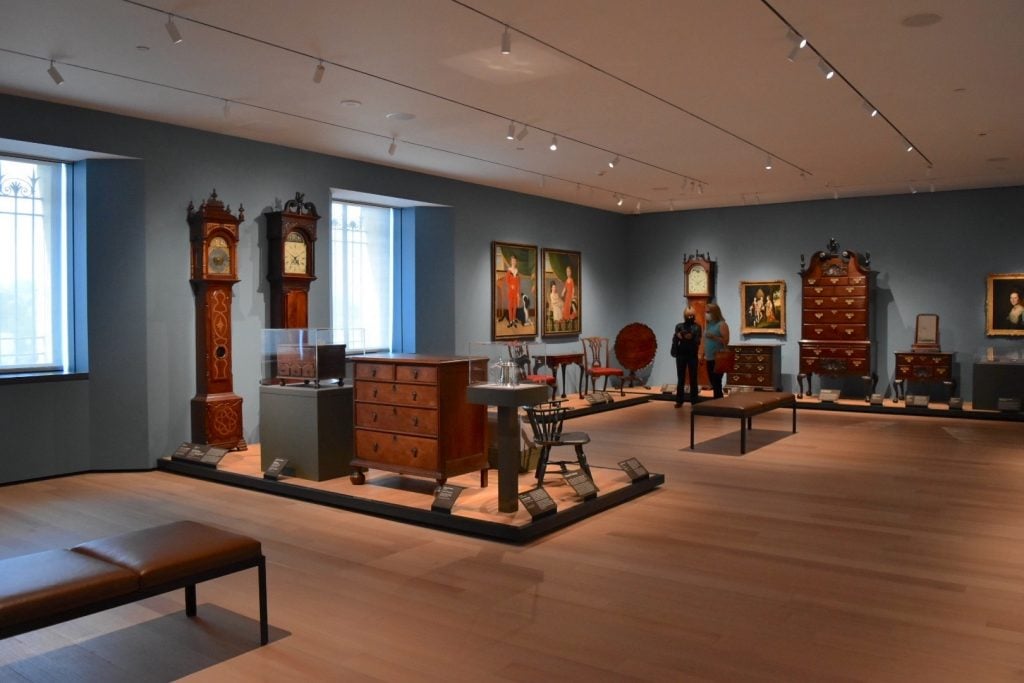
The new American art galleries at the Philadelphia Museum of Art. Photo by Ben Davis.
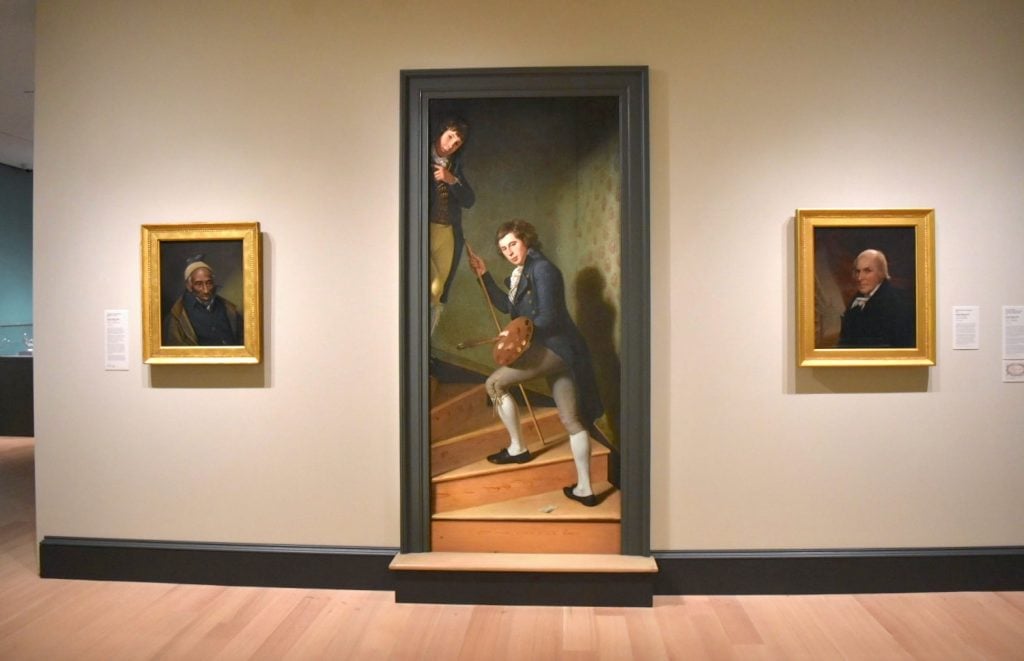
Charles Willson Peale, Portrait of Yarrow Mamout (1819), Staircase Group (Portrait of Raphaelle Peale and Titian Ramsay Peale I) (1795), and Self-Portrait in the Museum (1822). Photo by Ben Davis.
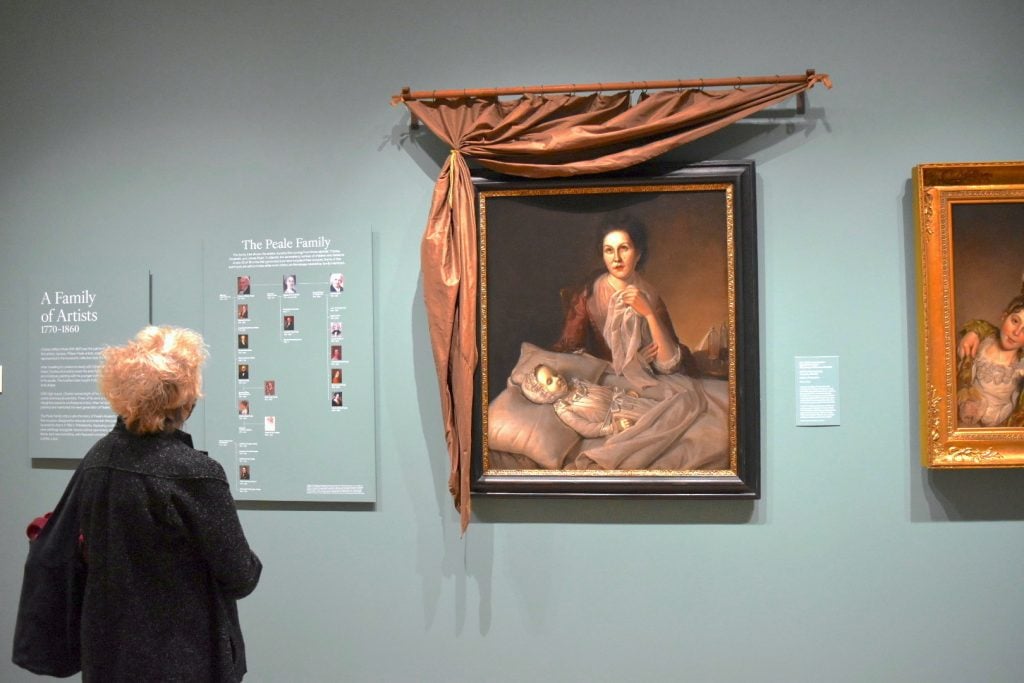
A visitor looks at Charles Willson Peale, Mrs. Peale Lamenting the Death of Her Child (1772). Photo by Ben Davis.
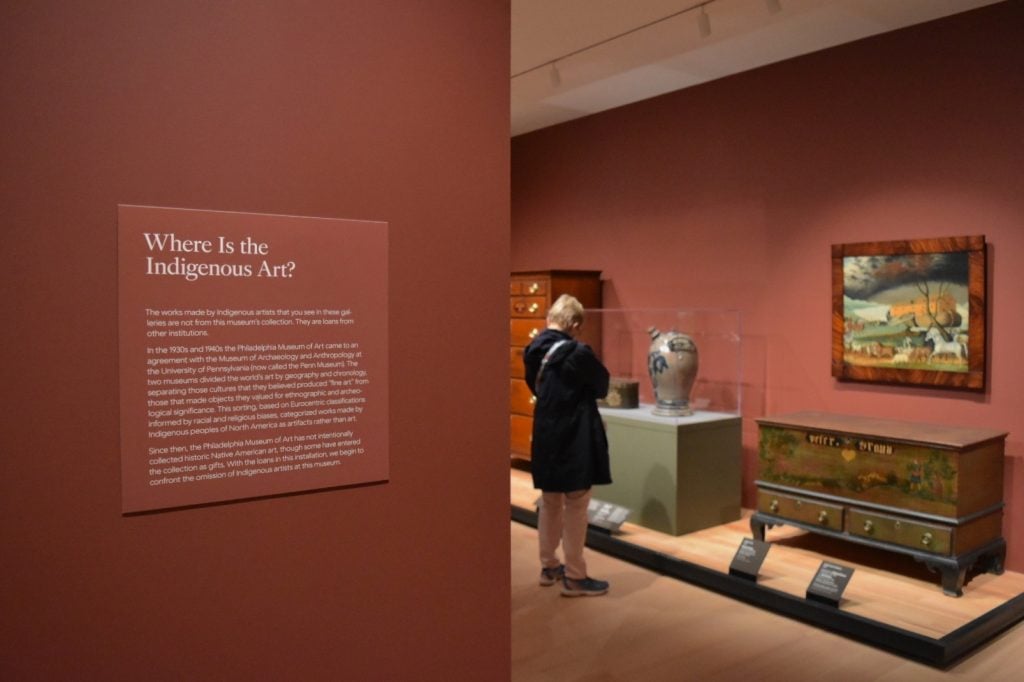
Wall text in the new American Art galleries at the Philadelphia Museum of Art. Photo by Ben Davis.
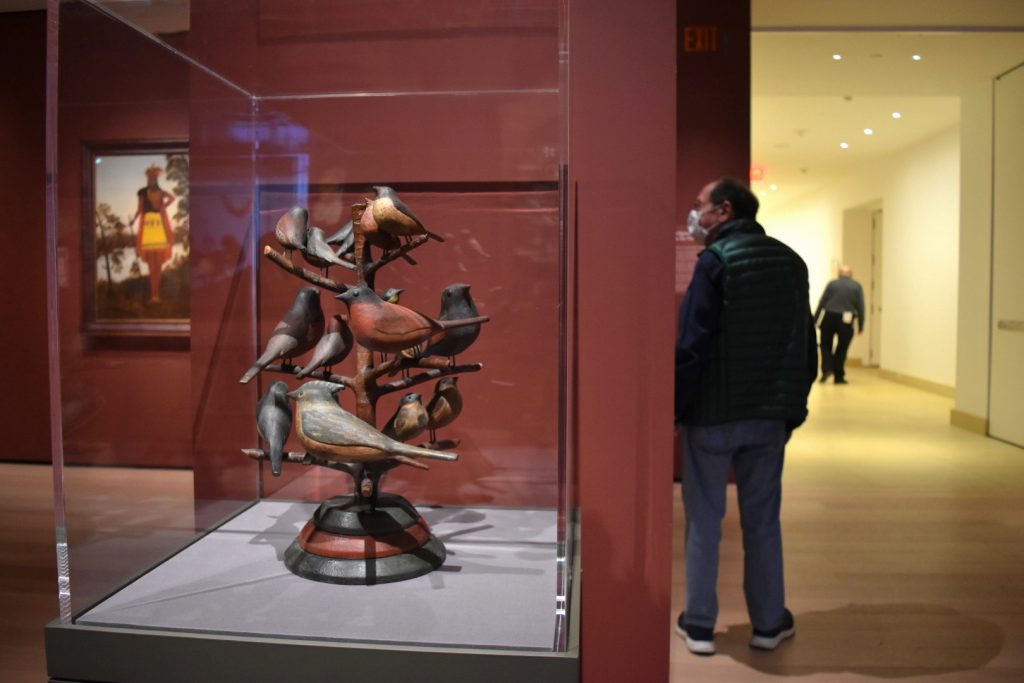
A Bird Tree at the Philadelphia Museum of Art. Photo by Ben Davis.
On the other side of the building, the corridor to the modern and contemporary galleries is enlivened by this colorful, slivery mural by Philadelphia artist Odili Donald Odita.
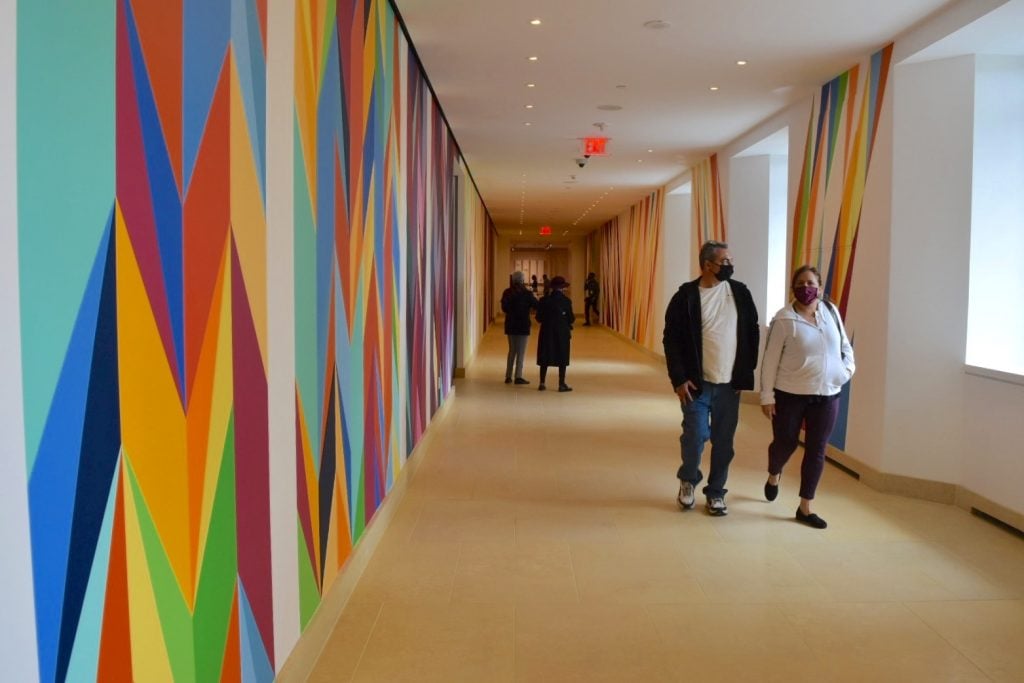
Odili Donald Odita, Walls of Change. Photo by Ben Davis.
The inaugural show, “New Grit: Art & Philly Now,” features 25 Philadelphia artists, and is a highlight.
![Installation view of "New Grit" at the Philadelphia Museum of Art, featuring [foreground] Mi-Kyoung Lee, <em>Thread Drawing 2015-5</em> (2015) and Jane Irish, <em>Cosmos a priori</em> (2015). Photo by Ben Davis.](https://news.artnet.com/app/news-upload/2021/05/new-grit-installation-view-3-1024x696.jpg)
Installation view of “New Grit” at the Philadelphia Museum of Art, featuring [on the ground] Mi-Kyoung Lee, Thread Drawing 2015-5 (2015) and Jane Irish, Cosmos a priori (2015). Photo by Ben Davis.
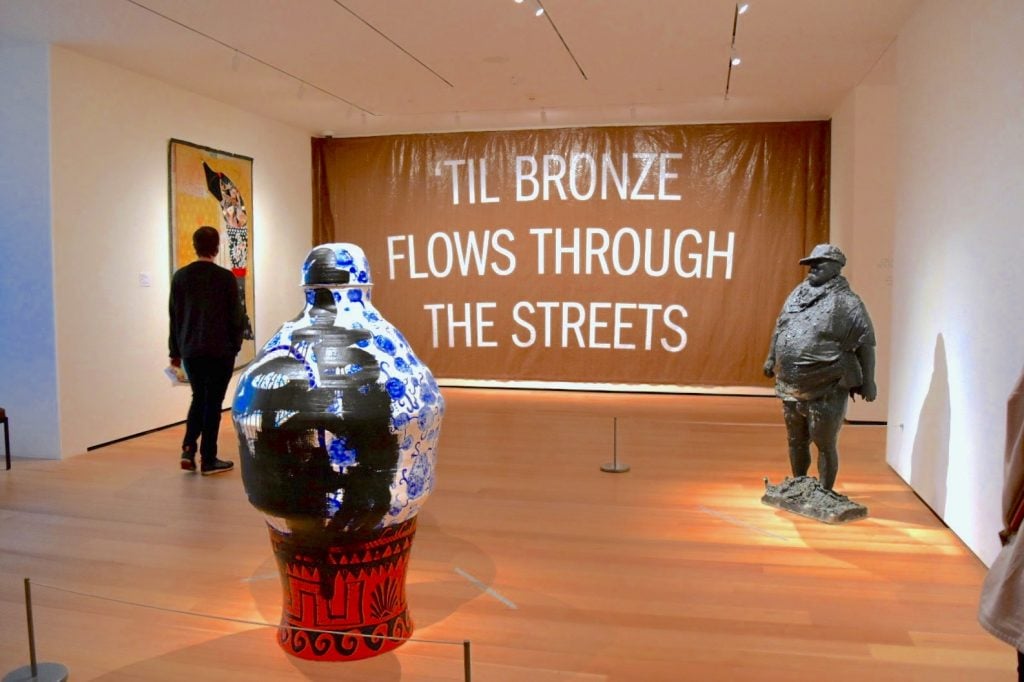
Installation view of “New Grit” at the Philadelphia Museum of Art, featuring works by Roberto Lugo and Wilmer Wilson IV. Photo by Ben Davis.
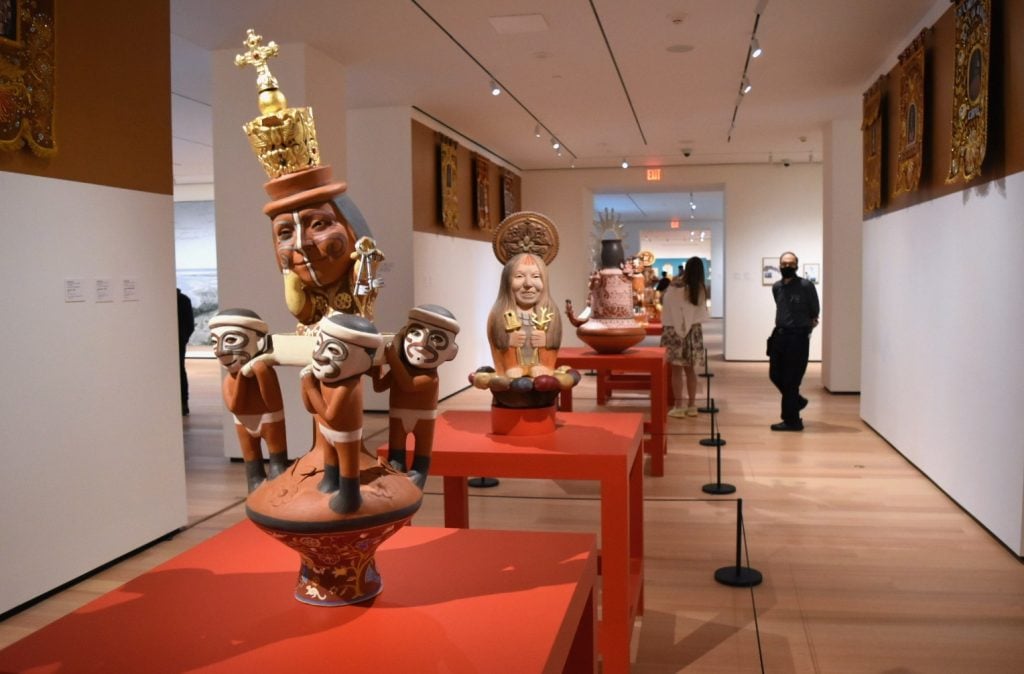
Works by Kukuli Velarde in “New Grit.” Photo by Ben Davis.
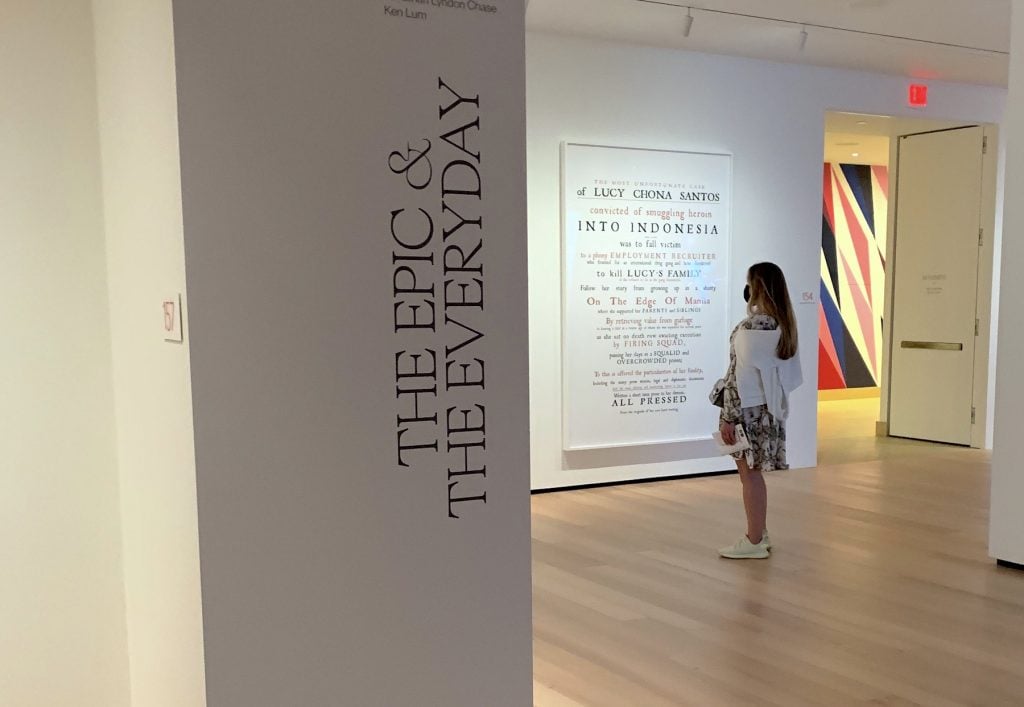
The “Epic & the Everyday” galleries in “New Grit” at the Philadelphia Museum of Art. Photo by Ben Davis.
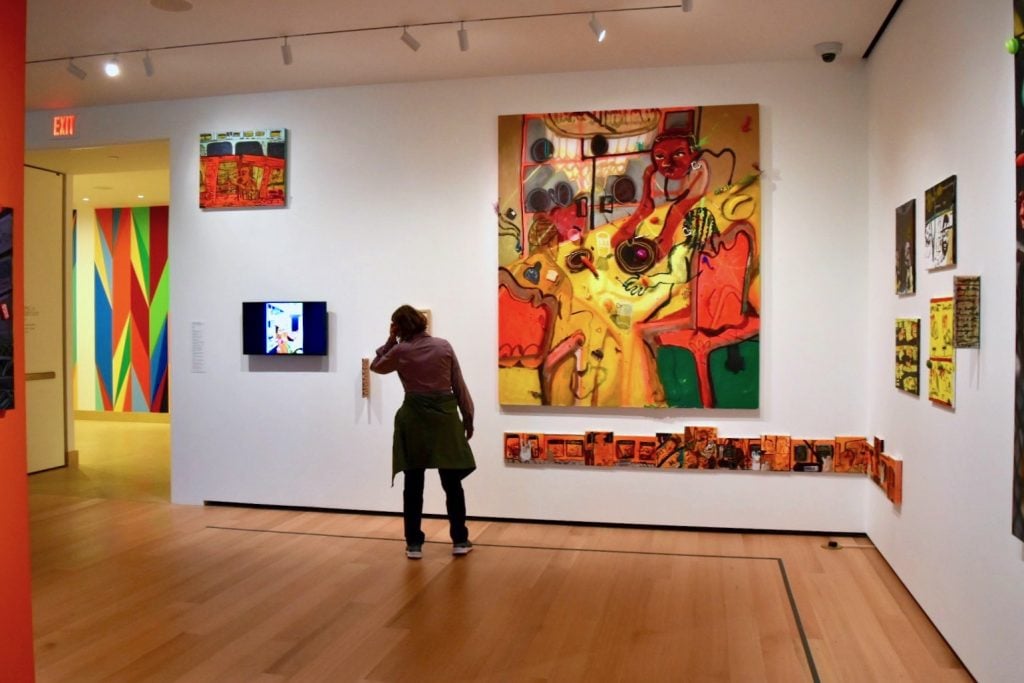
Paintings by Jonathan Lyndon Chase in “New Grit.” Photo by Ben Davis.
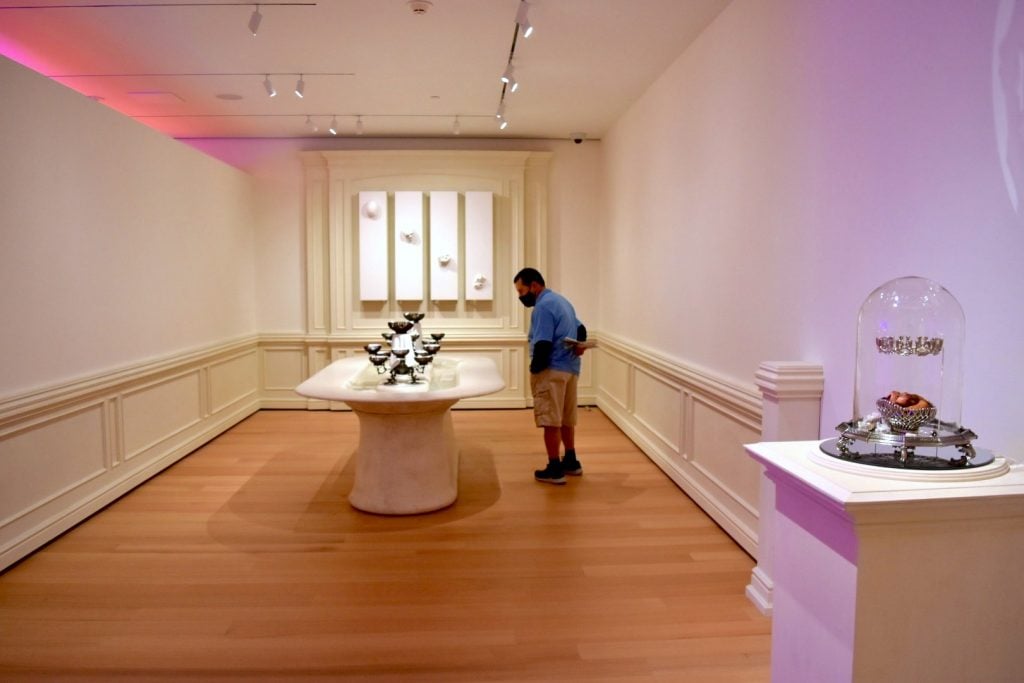
Installation view of Doug Bucci, The Last Course (2021). Photo by Ben Davis.
And, of course, like any modern-day expansion, this one is not scant on gift shop space. Stores are sited by the north entrance in the vaulted walkway and around the new galleries on the first floor.
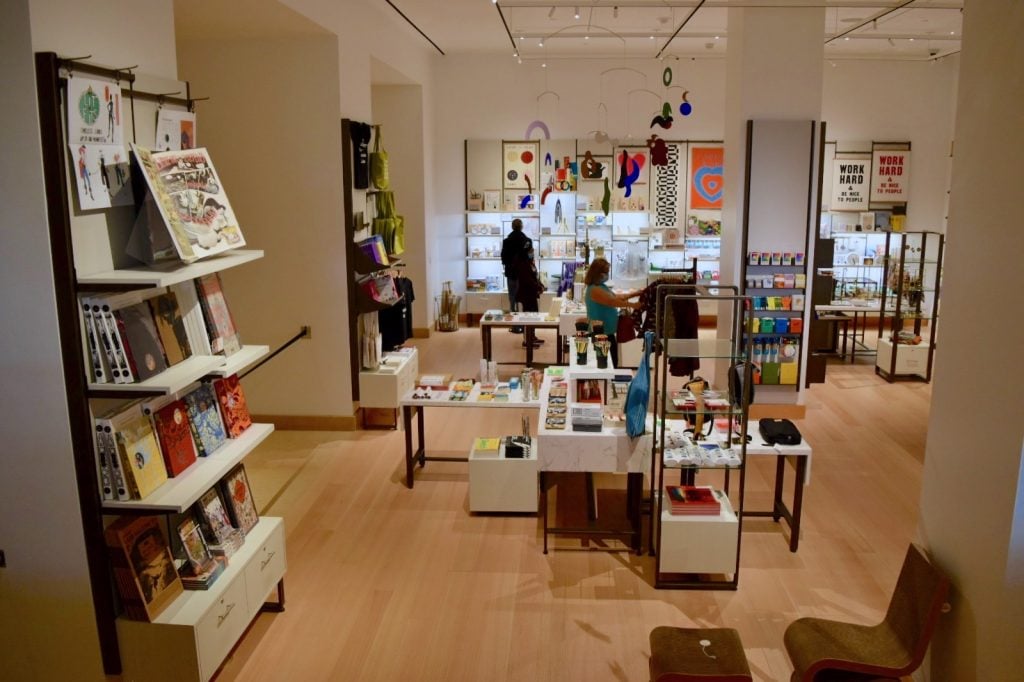
Design Store outside the Modern & Contemporary Art galleries at the Philadelphia Museum of Art. Photo by Ben Davis.
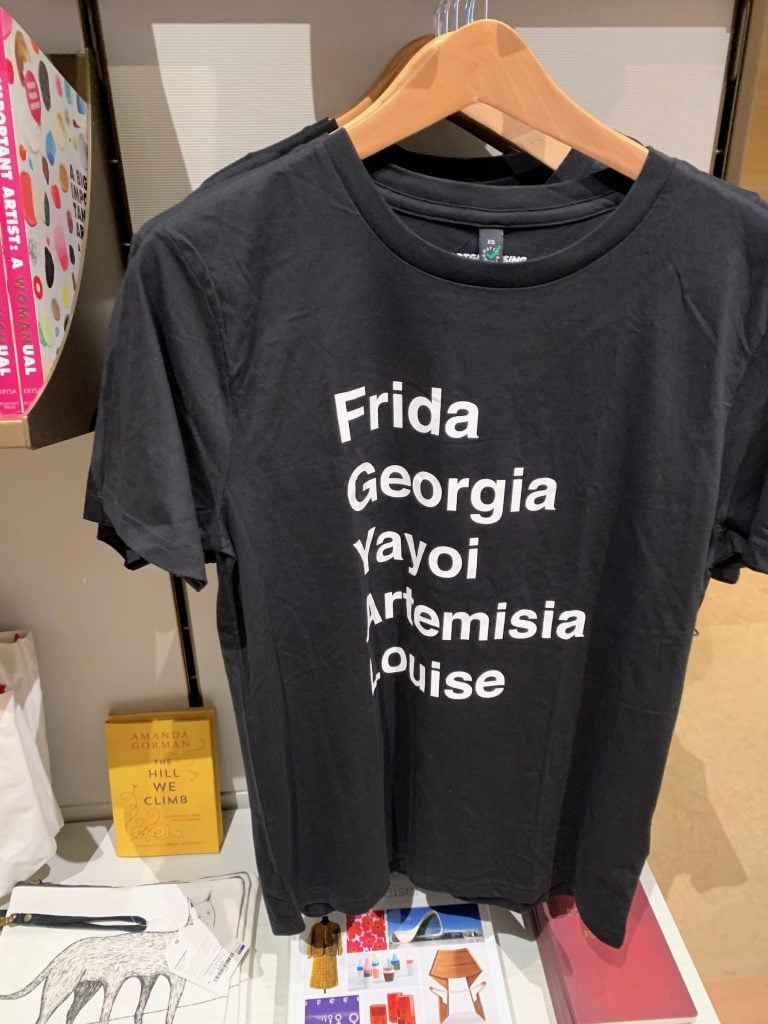
Shirt on sale in the Philadelphia Museum of Art gift shop. Photo by Ben Davis.
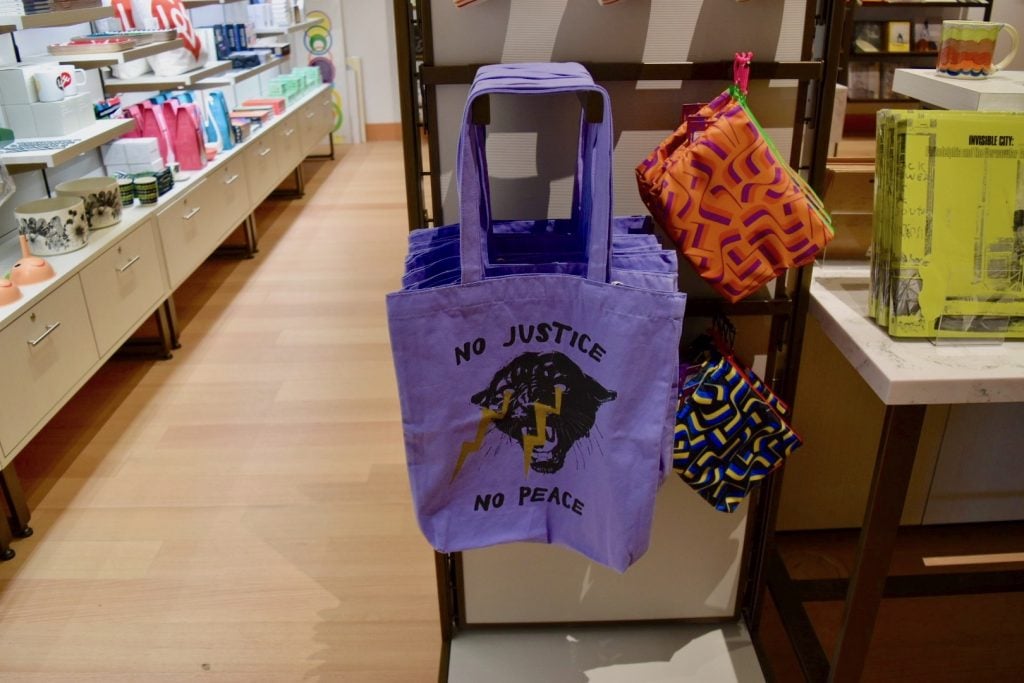
“No Justice, No Peace” tote bag, on sale at the gift shop of the Philadelphia Museum of Art. Photo by Ben Davis.
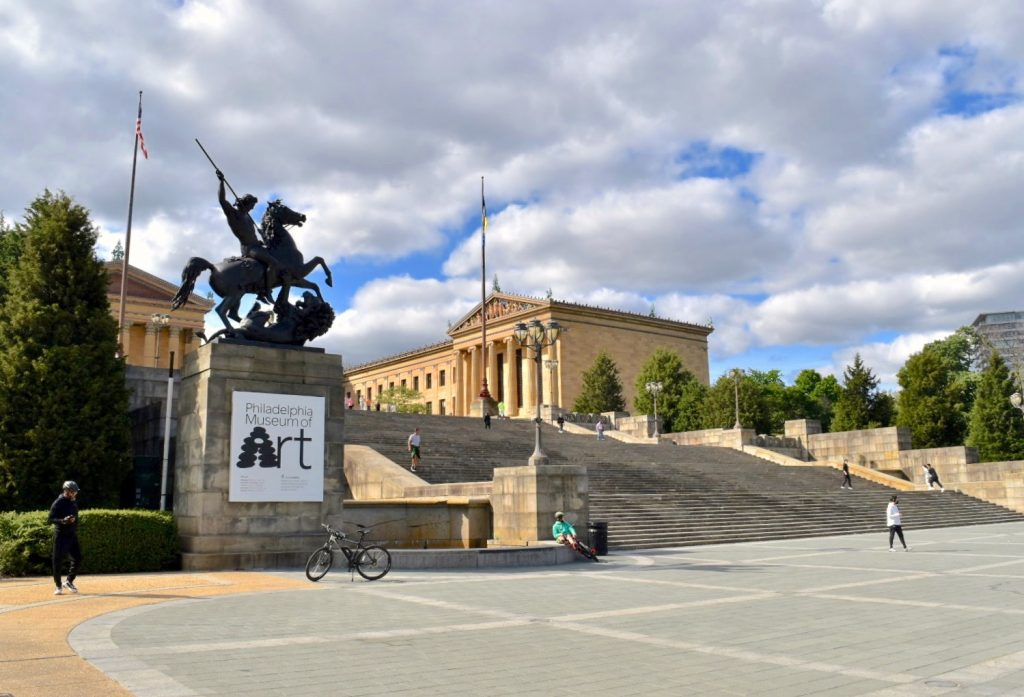
Exterior of the Philadelphia Museum of Art. Photo by Ben Davis.
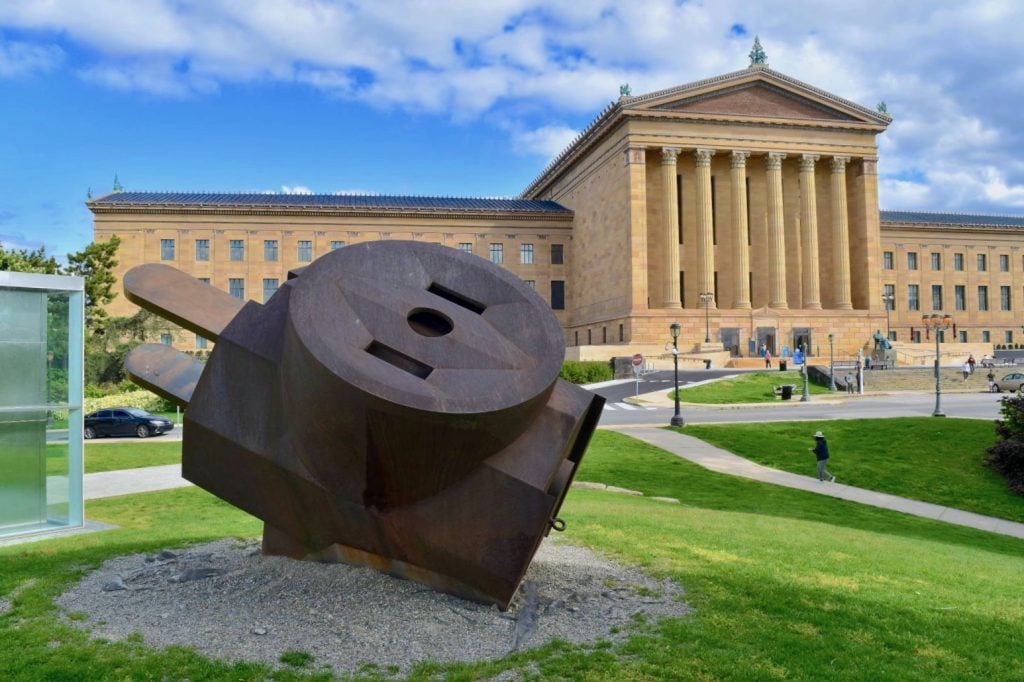

































![Installation view of "New Grit" at the Philadelphia Museum of Art, featuring [foreground] Mi-Kyoung Lee, <em>Thread Drawing 2015-5</em> (2015) and Jane Irish, <em>Cosmos a priori</em> (2015). Photo by Ben Davis.](https://news.artnet.com/app/news-upload/2021/05/new-grit-installation-view-3-1024x696.jpg)










